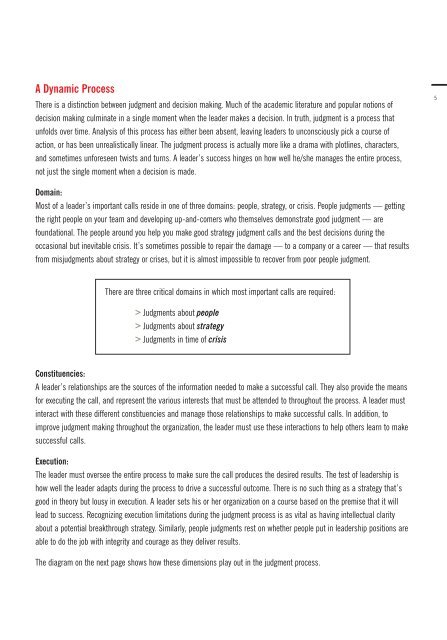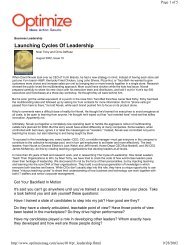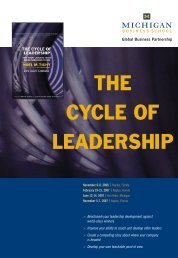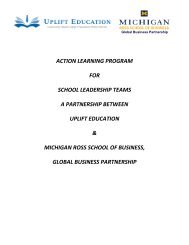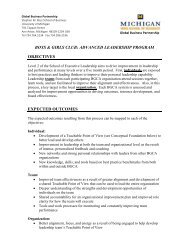June 5-7, 2012 I Ann Arbor, Michigan December 3-5 ... - Noel Tichy
June 5-7, 2012 I Ann Arbor, Michigan December 3-5 ... - Noel Tichy
June 5-7, 2012 I Ann Arbor, Michigan December 3-5 ... - Noel Tichy
You also want an ePaper? Increase the reach of your titles
YUMPU automatically turns print PDFs into web optimized ePapers that Google loves.
A Dynamic Process<br />
There is a distinction between judgment and decision making. Much of the academic literature and popular notions of<br />
decision making culminate in a single moment when the leader makes a decision. In truth, judgment is a process that<br />
unfolds over time. Analysis of this process has either been absent, leaving leaders to unconsciously pick a course of<br />
action, or has been unrealistically linear. The judgment process is actually more like a drama with plotlines, characters,<br />
and sometimes unforeseen twists and turns. A leader’s success hinges on how well he/she manages the entire process,<br />
not just the single moment when a decision is made.<br />
5<br />
Domain:<br />
Most of a leader’s important calls reside in one of three domains: people, strategy, or crisis. People judgments — getting<br />
the right people on your team and developing up-and-comers who themselves demonstrate good judgment — are<br />
foundational. The people around you help you make good strategy judgment calls and the best decisions during the<br />
occasional but inevitable crisis. It’s sometimes possible to repair the damage — to a company or a career — that results<br />
from misjudgments about strategy or crises, but it is almost impossible to recover from poor people judgment.<br />
There are three critical domains in which most important calls are required:<br />
> Judgments about people<br />
> Judgments about strategy<br />
> Judgments in time of crisis<br />
Constituencies:<br />
A leader’s relationships are the sources of the information needed to make a successful call. They also provide the means<br />
for executing the call, and represent the various interests that must be attended to throughout the process. A leader must<br />
interact with these different constituencies and manage those relationships to make successful calls. In addition, to<br />
improve judgment making throughout the organization, the leader must use these interactions to help others learn to make<br />
successful calls.<br />
Execution:<br />
The leader must oversee the entire process to make sure the call produces the desired results. The test of leadership is<br />
how well the leader adapts during the process to drive a successful outcome. There is no such thing as a strategy that’s<br />
good in theory but lousy in execution. A leader sets his or her organization on a course based on the premise that it will<br />
lead to success. Recognizing execution limitations during the judgment process is as vital as having intellectual clarity<br />
about a potential breakthrough strategy. Similarly, people judgments rest on whether people put in leadership positions are<br />
able to do the job with integrity and courage as they deliver results.<br />
The diagram on the next page shows how these dimensions play out in the judgment process.


